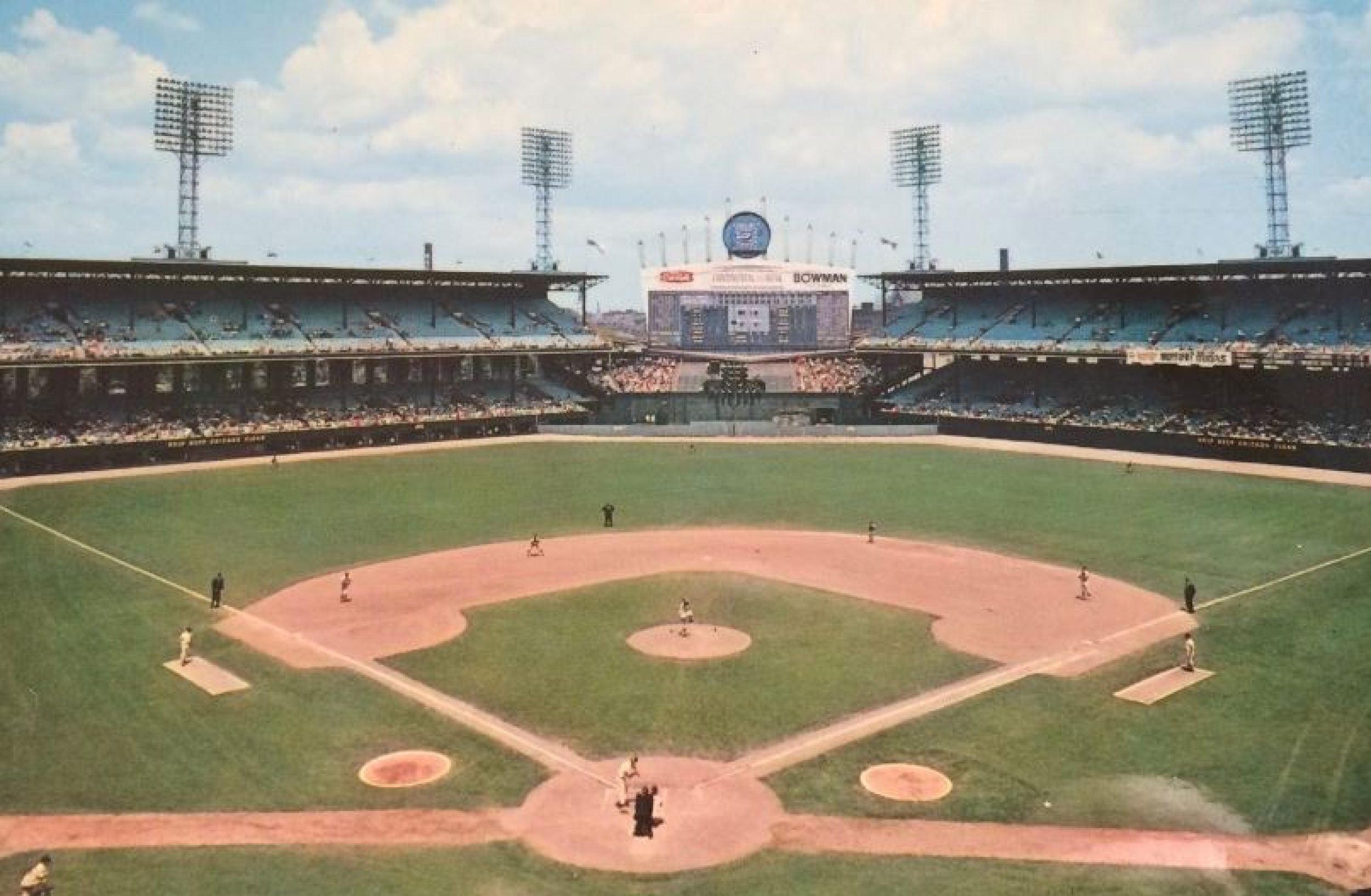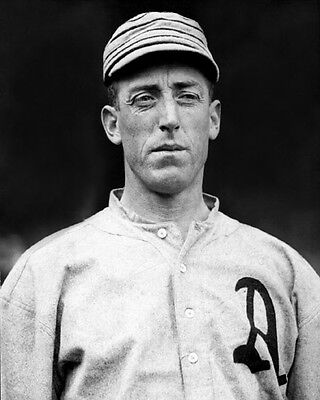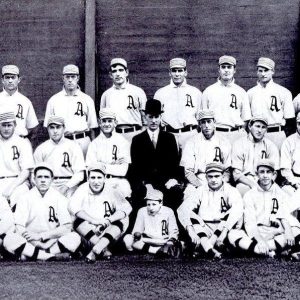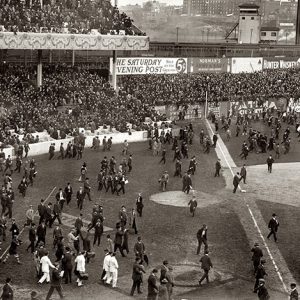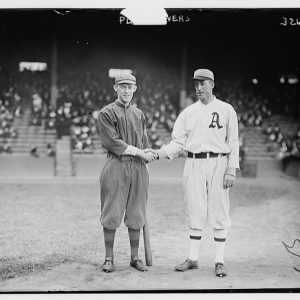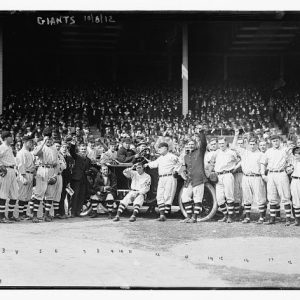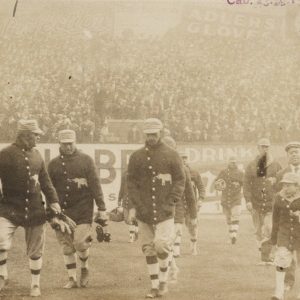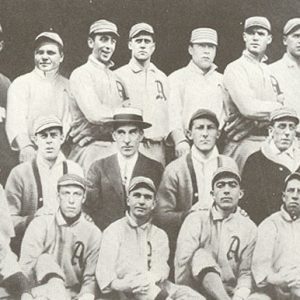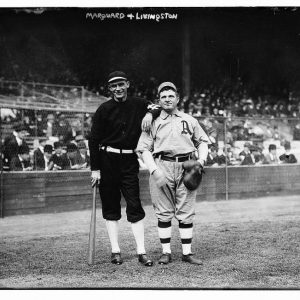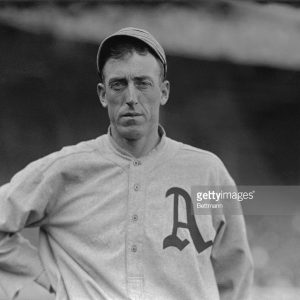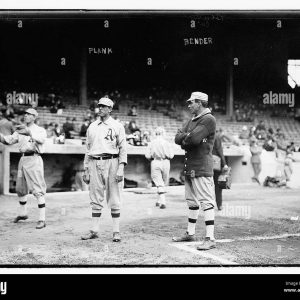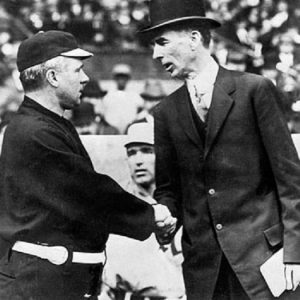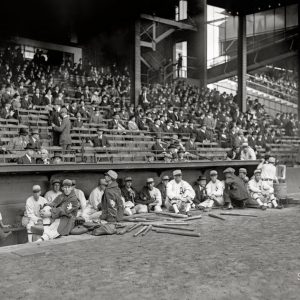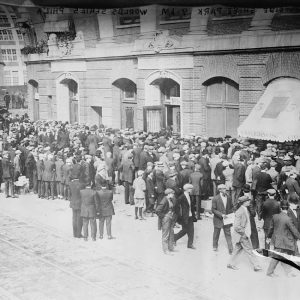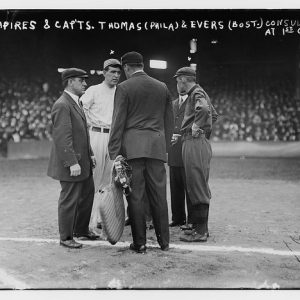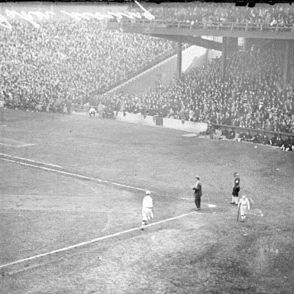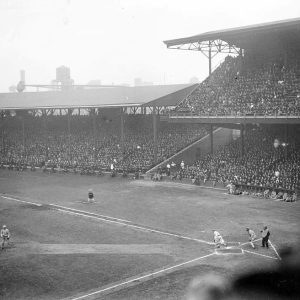Panoramic Photo Above:
Comiskey Park

Baseball History Comes Alive Now Ranked As a Top Five Website by Feedspot Among All Baseball History Websites and Blogs!
(Check out Feedspot's list of the Top 35 Baseball History websites and blogs)
Guest Submissions from Our Readers Always Welcome! Click for details
Visit the Baseball History Comes Alive Home Page
Subscribe to Baseball History Comes Alive
Free Bonus for Subscribing:
Gary’s Handy Dandy World Series Reference Guide
Eddie Plank and 1910-1914 Philadelphia A’s Photo Gallery
Today, we welcome Mike Janacek with his first guest submission: an interesting look at the career of the A’s Hall of Famer, Eddie Plank, one of the greatest left-handed pitchers in baseball history. His 326 wins still rank thirteenth all-time. I think you’ll enjoy what Mike shares with us today -GL
Let’s Remember Hall of Famer, “Gettsburg Eddie” Plank!
“Plank was not the fastest, he was not the trickiest, and he was not the possessor of the most stuff. He was just the greatest.” -Eddie Collins (1)
Edward Stuart Plank (August 31, 1875- February 24, 1926) was the first left-handed pitcher to win 200 games, then 300 games, and held the record of 326 career victories until broken by Warren Spahn in 1962. He still ranks first in shutouts by a left-handed pitcher with 66. “Gettysburg Eddie” played for the Philadelphia Athletics from 1901 to 1914, spent a year with the St. Louis Terriers, and closed out his 17-year career with two years in St. Louis with the Browns. While he was with the Athletics, they went to the World Series five times.
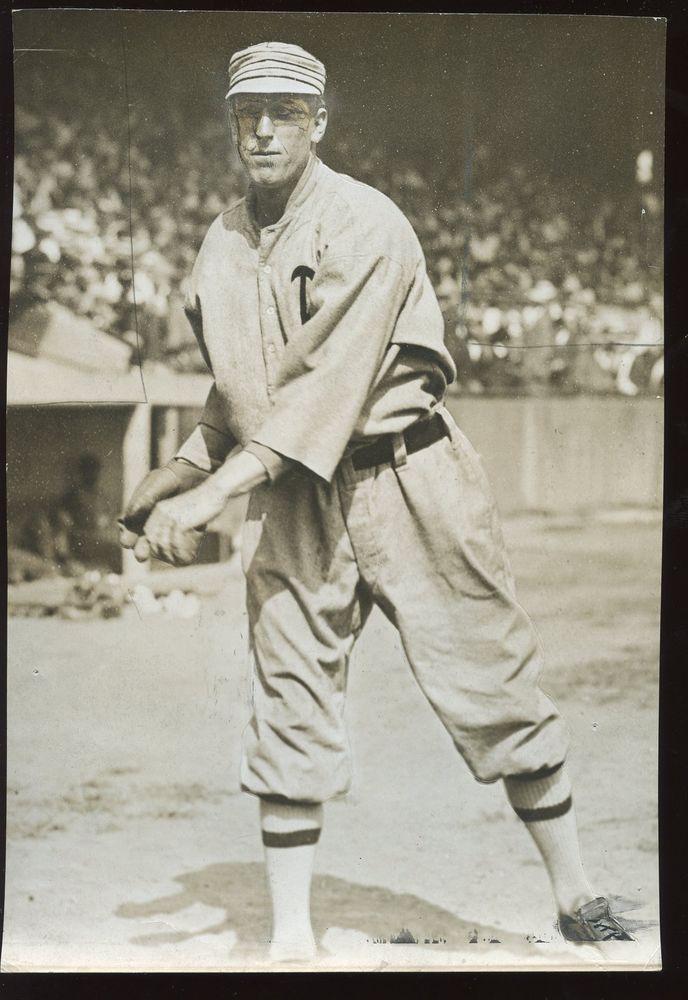
Born and raised on a farm in Gettysburg, Pennsylvania, Eddie was the fourth of seven children. He did not begin playing ball until he was 17. Eddie was enrolled at Gettysburg Academy, and the coach of Gettysburg College had him try out for the team. Recommended to Connie Mack, who liked what he saw, Plank signed a contract with the Athletics.
As a rookie in 1901, Plank posted a 17-13 record with an ERA of 3.32, started 32 games, and completed 28. He won 20 games the following year, helping the A’s win the pennant. Only Rube Waddell won more games that year. Winning 23 games in 1903 and 26 in 1904, it wasn’t until 1905 that he made his first trip to the World Series, which the A’s lost to the New York Giants in five games. Plank gave up only three runs in the 17 innings he worked, and the A’s did not score an earned run in the entire Series. In the first game, he went nine against Christy Mathewson, losing 3-0, and in Game Four, he lost 1-0 to Joe McGinty, throwing another complete game.
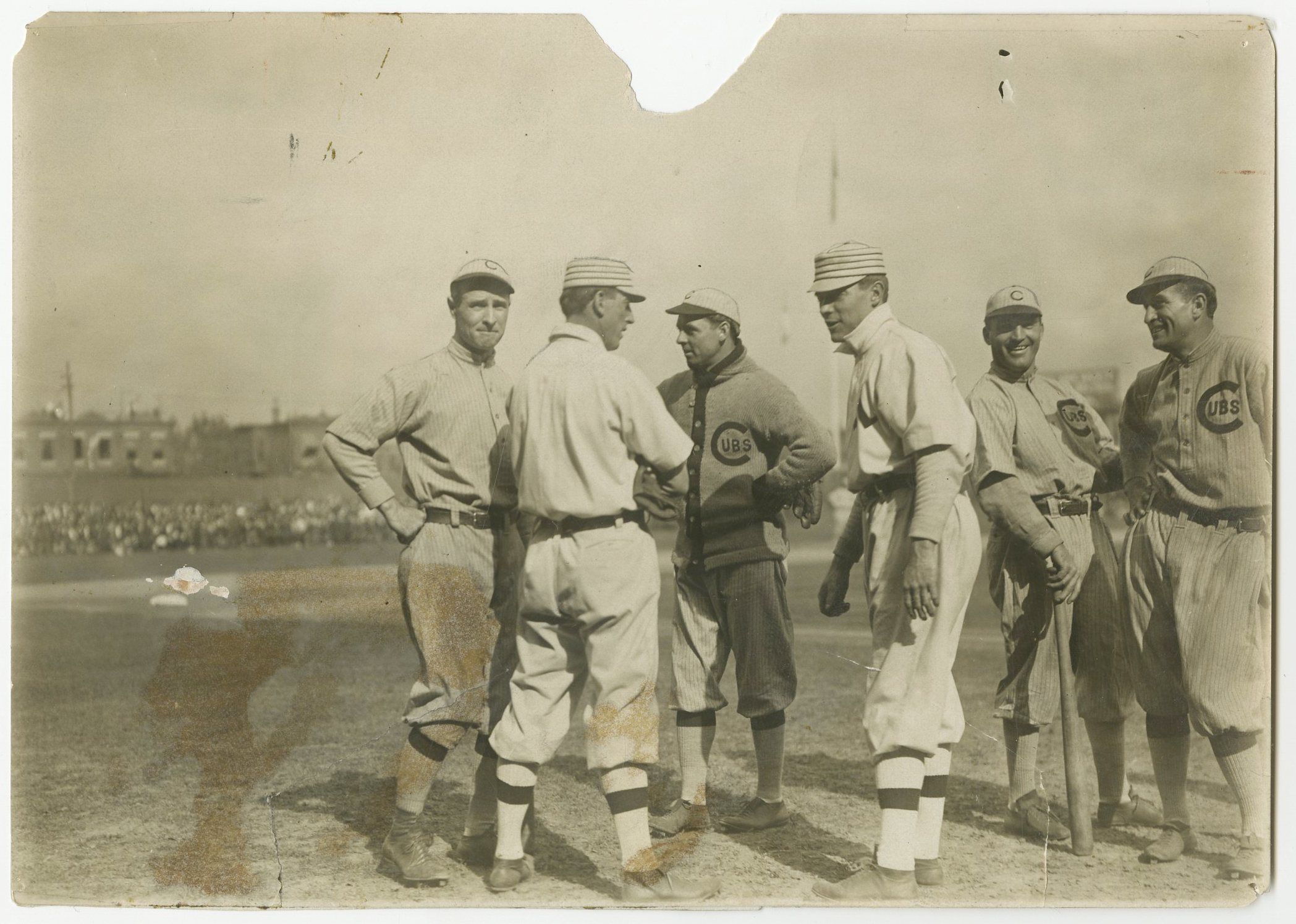
Fatigue set in during the 1906 campaign, and Plank only pitched in one game in the season’s final 50. He still went 19-6 with a 2.25 ERA and a winning percentage of .760 to lead the American League. Eddie appeared in a league-leading 43 games the following year, throwing 343 innings and going 24-16 with a 2.20 ERA.
The Athletics finished sixth in 1908, and Eddie had his first losing season, with a 14-16 record and a 2.17 ERA. The Athletics improved in 1909, finishing 3.5 games behind Detroit. Eddie went 19-10 with a career-low 1.76 ERA. Between 1910 and 1914, the Philadelphia Athletics were a masterpiece created by the master, Connie Mack. Over those five years, they would win four pennants and three World Series Championships. The A’s rotation in 1910 included Jack Coombs (31-9, Chief Bender (3-5), Cy Morgan (18-12), and Eddie Plank (16-10). While the A’s went to the World Series, Plank didn’t pitch, and they defeated the Cubs.
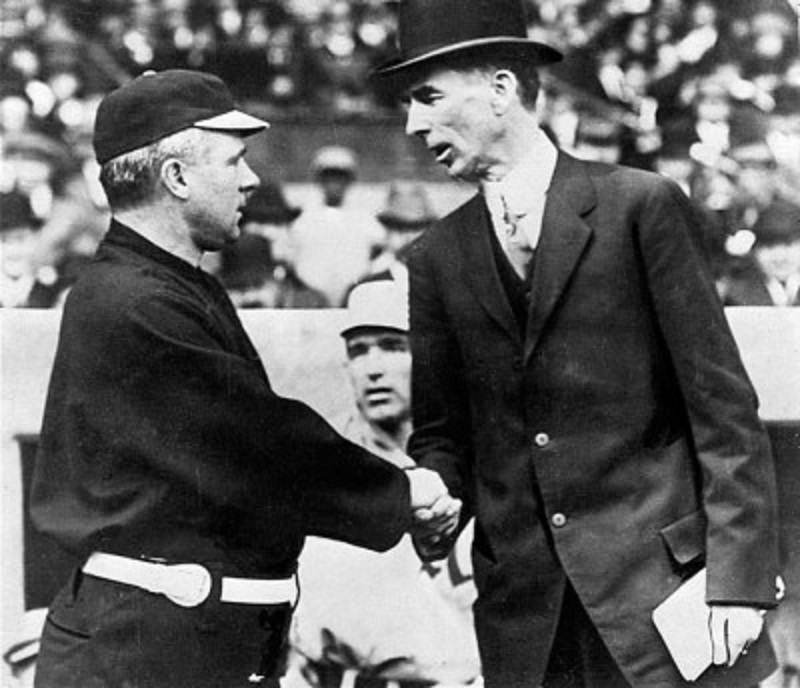
A recovery in 1911 led to a 23-game winning season with a 2.10 ERA. Eddie threw three shutouts to lead the American League. In the World Series, he beat Rube Marquard and the Giants in Game Two but came on in relief in Game Five, giving up the winning run.
Following up in 1912, Eddie probably had his best season yet. At age 36, he won 26 and lost 6 for a .813 winning percentage with a 2.22 ERA. As was the story of his career, every time he had a great year, somebody would have a better one. His 26 wins were only good for fourth place, as Joe Wood won 34, Walter Johnson won 33, and Ed Walsh won 27. On July 4, he beat Joe Wood, and in September, he went 19 innings in a loss to Washington, the winning run scoring on a throwing error.
The Athletics won the pennant in 1913, and Eddie was 18-10. In the World Series, he faced off with Christy Mathewson in Game Two, throwing shutout ball for nine innings. Then, in the tenth, he gave up three runs, losing the game. In Game Five, the two squared off again, and Eddie threw a two-hitter, winning the game 3-1 and the Series.
In his final year with Philadelphia, the A’s won 99 games and once more made the trip to the World Series. Plank won 15 games that season, which was fourth-best on the team. The Boston Braves swept the A’s with Eddie pitching a complete Game Two and losing 1-0. Signing a contract with the St. Louis Terriers of the outlaw Federal League for 1915, Eddie won 21 games, but the league folded at the end of the season. Declaring himself a free agent, the league determined that he belonged to the St. Louis Browns, and he played his last two seasons in St Louis. Arm troubles and a nervous breakdown contributed to his retirement in October 1917. Going out in the style he had established his whole career, he pitched his last game on August 6, 1917, against Walter Johnson and the Washington Senators. He went 11 innings, losing 1-0.
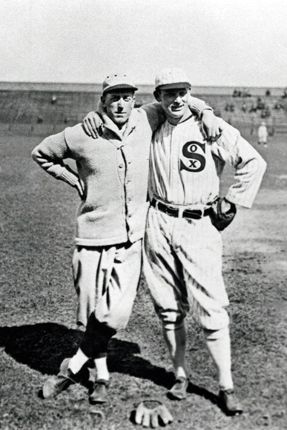
Finishing a 17-year career, Plank amassed a record of 326 wins against 194 losses (.627), with a 2.35 ERA. He was the winningest left-handed pitcher in major league history until he was surpassed by Warren Spahn in 1962. He won 20 or more games in a season seven times. His record might have been even better, but manager Connie Mack would often line him up against the other teams’ aces so that he would be facing pitchers like Christy Matthewson, Ed Walsh, and Walter Johnson more often. In World Series play, his 2-5 record did not indicate his performance, as he posted a 1.32 ERA. His team didn’t give him much run support.
He was a quiet, introspective man who seldom spoke and was often overlooked by the media of his time. Playing with Rube Waddell and later Chief Bender, Eddie was second fiddle but always consistent. Every time he had a great year, someone else had a better one. He had a ritual when on the mound: He would get the sign from the catcher, adjust his shirt, then his cap, pull on his sleeve, hitch up his pants, readjust his shirt again, stare at the base runner, maybe ask for a new ball, sometimes talk to himself, and generally drive a hitter to distraction.
On February 22, 1926, Eddie Plank suffered a stroke that paralyzed his left side, and two days later, he was dead. After his death, his A’s manager, Connie Mack, paid him the highest tribute:
“Eddie Plank was one of the smartest left-handed pitchers it has been my pleasure to have on my club. He was short and light, as pitchers go, but he made up for the physical defects, if such they were, by his study of the game and his smartness when he was on the pitching peak.” (2)
Eddie Plank was elected to the Major League Baseball Hall of Fame in 1946.
Mike Janacek
We’d love to hear what you think about this or any other related baseball history topic…please leave comments below.
Sources and Citations:
1 Grayson, Harry. Farmer Eddie Plank Ranks Among Great Lefthanded Pitchers. Evening Independent. October 14, 1943. Retrieved May 2, 2025.
2 Duttera, Sharon. Eddie Plank’s Death Stunned Connie Mack. The Gettysburg Times. July 14, 1986. Retrieved May 2, 2025.
Finkel, Jan. Eddie Plank. Sabr.org. https://sabr.org/bioproj/person/eddie-plank/. Retrieved May 2, 2025.
Baseball-reference.com. Eddie Plank. https://www.baseball-reference.com/players/p/planked01.shtml. Retrieved May 2, 2025.
Baseballhall.org. Eddie Plank. https://baseballhall.org/hall-of-famers/plank-eddie. Retrieved May 2, 2025.
Photo Credits: All from Google search
Subscribe to Baseball History Comes Alive. FREE BONUS for subscribing: Gary’s Handy Dandy World Series Reference Guide.
